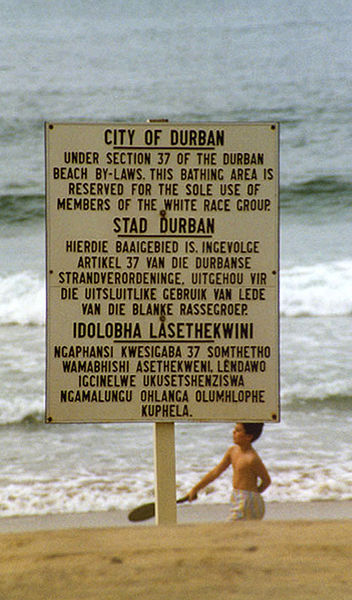Day-to-Day Proximity
Even with the success of all the other pieces of legislation we have already described, there is still the vexed issue of what to do about the occasional chance encounters between black and white as they go about their daily lives. How might these be policed, so that segregation applies to public spaces and amenities? What rules will need to be drawn up to restrict life in parks, beaches, government offices, shops or access to such necessities as ambulances?
To check your answer click on the following link to read more:
Sadly, there was nothing new about certain places being off-limits to black people and other non-white races in South Africa. What changed after 1948 was the goal of making these rules more systematic and all-embracing. To start with many of the rules were set by individual organizations such as post offices requiring black and white to use different entrances. The races were also segregated on Public transport.
In the face of legal challenges, the ruling National Party then introduced legislation. For example, the Reservation of Separate Amenities Act formalized the segregation and also made it legal to offer very different standards of service or quality of amenity to different races. Things became even more restrictive with the Native Laws Amendment Act which outlawed classes, entertainments, even church services if they had participants of different races. The rules even extended to sport, forbidding mixed teams or any form of competition between black and white. Finally, all sorts of places started to have white-only and black-only spaces such as beaches and parks. There were also black and white-only ambulances in which people of different races were not allowed to travel even if they were seriously sick or injured.
To find out more: http://en.wikipedia.org/wiki/Reservation_of_Separate_Amenities_Act


